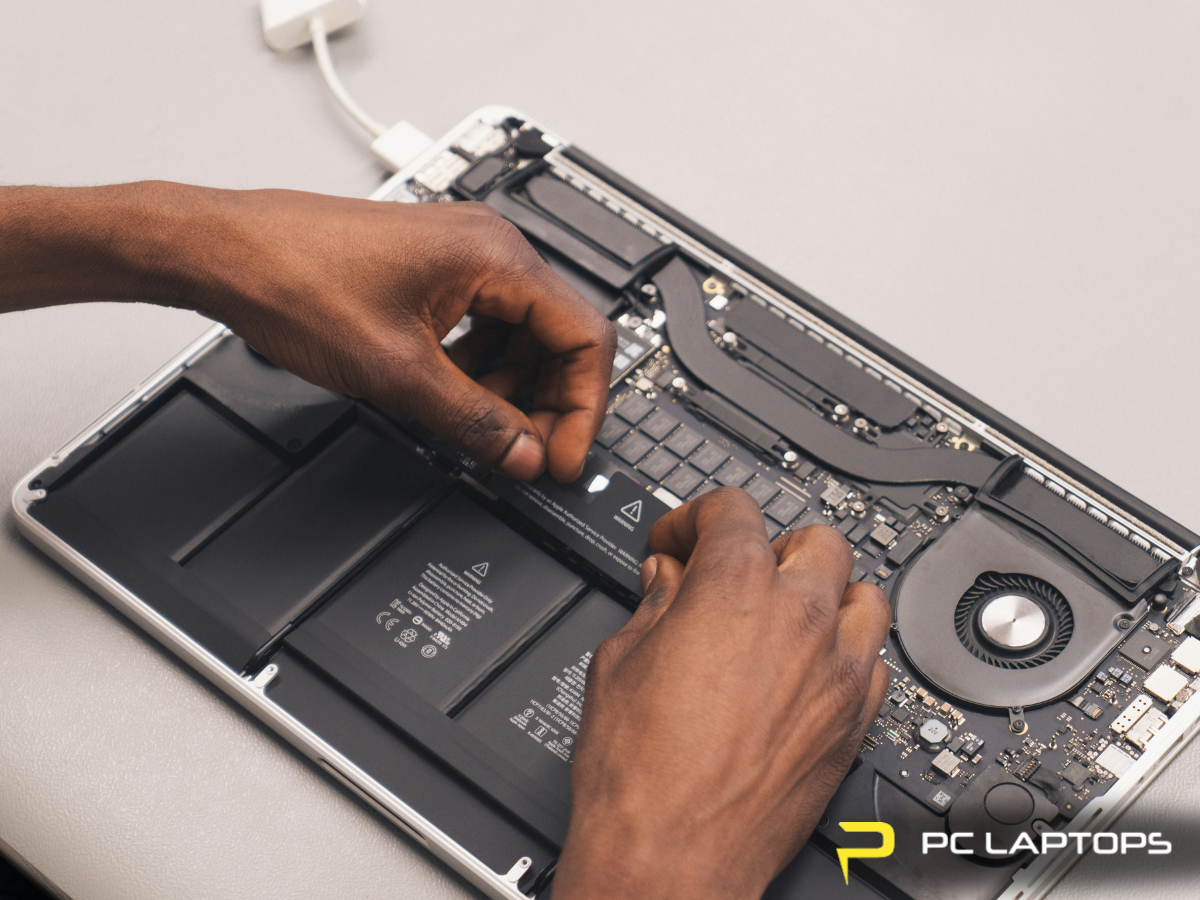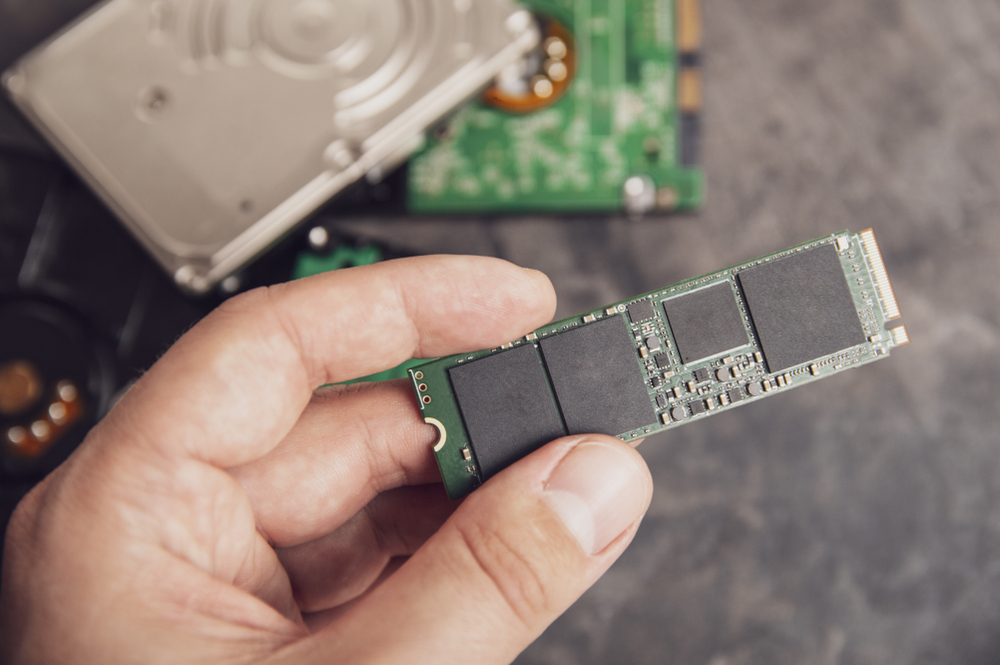Typical Steps in the Computer Repair Process

Typical Steps in the Computer Repair Process
Dealing with a computer issue can be frustrating, but the computer repair process is straightforward when you know what to expect. This article walks you through the standard laptop repair steps from diagnosis to completion, so you know exactly what to expect during a repair. Whether you need a quick fix or a full system overhaul, PC Laptops is your trusted Utah PC repair shop ready to help. We have locations from American Fork and Orem up to Salt Lake City and even northern areas like Layton and Riverdale.
At a Glance: What is the typical computer repair process like?
The typical computer repair process begins with diagnosing the problem—starting with a detailed discussion about the issue, followed by a visual inspection and thorough hardware and software testing to pinpoint the cause. Once the problem is identified, you’ll receive clear repair or replacement options, transparent pricing, and realistic timelines before any work begins. Repairs may involve part replacements, system cleaning, software re-installs, or performance upgrades, all followed by rigorous testing to ensure stability and reliability. Finally, you’ll get a walk-through of the completed work along with tips for preventing future problems. PC Laptops follows this proven approach, offering certified technicians, honest pricing, and over 25 years of experience across Utah locations from American Fork to Layton.
Why Knowing the Computer Repair Process Matters
Let’s be honest—having a broken computer is a headache. Whether you rely on your laptop for work, gaming, school, or streaming your favorite show, any disruption can throw your day off. But the good news? You’re not alone, and the solution might be easier than you think. By understanding the computer repair process, you’ll know what to expect, how long it might take, and what your options are.
Whether you’re bringing your device to a technician for the first time or just curious about how PC Laptops handles repairs, this guide will walk you through it all—clearly, step-by-step.
What to Expect: Typical Steps in the Computer Repair Process
Dealing with computer issues can be frustrating, but understanding the repair process can ease the stress. At PC Laptops, we begin with a thorough assessment based on your description of the problem, followed by a physical inspection and in-depth hardware and software diagnostics. Once we identify the issue—whether it’s a faulty hard drive, software corruption, or overheating—we clearly explain your repair or replacement options along with costs and timelines. Our certified technicians then carry out the necessary repairs, test the system rigorously for performance and stability, and walk you through the completed work. With locations across Utah and over 25 years of experience, PC Laptops offers fast, honest, and expert service, plus ongoing support to keep your system running smoothly.
Step 1: Initial Assessment & Problem Description
The first thing we do is listen to you.
When you walk into PC Laptops, you'll be asked about what’s going on with your device. Has it been running slow? Did it suddenly shut down? Is your screen flickering?
This step is crucial because it helps us pinpoint potential causes before we even open the case. Be prepared to answer these common questions:
- When did the problem start?
- Did you install any new software recently?
- Has the device been dropped or exposed to liquids?
- Were there any error messages?
Tip: The more details you give, the faster we can identify the issue.
Understanding common software issues like random crashes, missing files, or failed software updates helps us determine whether it's a software-related or hardware-related failure.
Step 2: Visual Inspection and Physical Checkup
Next, we take a look under the hood—literally.
In this stage, our tech team visually inspects the device for:
- Signs of damage (cracked screen, frayed cables)
- Swollen batteries
- Loose connectors
- Dust or debris blocking airflow
We'll remove the cover from the chassis and look inside the case. Dust accumulation near fans, the CPU, or power supplies can affect overall system performance. We'll also check that individual components like memory modules, hard drives, and cables are securely connected to the motherboard.
Technicians always use anti-static tools to avoid static electricity damage during this stage.
Step 3: Hardware Diagnostics and Software Testing
Once we’ve ruled out the obvious, it’s time to go deeper. We use diagnostic tools to evaluate:
- RAM performance
- Hard drive health
- CPU and GPU temperatures
- Battery condition
- BIOS version and settings
We also boot up your system (if possible) to check for software conflicts, malware, or system errors. Software programs may be failing due to missing system files or corrupted updates. We also determine if system errors are caused by hardware failures or improper software installation.
Using tools like hardware monitoring software and multimeters, we test voltages, power supplies, and system resources.
If the device fails to boot, we may try booting into Safe Mode or a bootable external disk to troubleshoot. Blue screen errors, commonly called the Blue Screen of Death (BSOD), often signal a deeper hardware problem or corrupted operating system.
This dual approach helps us determine whether the issue is:
- Hardware-related (e.g., dead hard drive)
- Software-related (e.g., operating system crash)
- Or a mix of both
Step 4: Repair or Replacement Options
Once the problem is fully diagnosed, we’ll talk repair strategy.
You’ll get a clear breakdown of what needs to be fixed, whether that’s:
- Replacing a damaged SSD or hard drive
- Reinstalling the operating system
- Removing malware or viruses
- Upgrading outdated RAM or storage
- Updating the BIOS
If it’s a common problem, like overheating or sluggish performance, we might suggest additional upgrades or preventive measures.
We’ll also discuss cost and timelines so there are no surprises. If your device is older or nearing end-of-life, we may recommend alternatives like:
- A full system upgrade
- Data transfer to a new machine
- Custom build options (yes, we do that too!)
Understanding whether to repair or replace is a key part of this phase. PC Laptops will help you weigh the pros and cons so you can make an informed decision.
Step 5: The Repair Work Begins
Once you give the green light, our technicians get to work.
We’ll either:
- Order and install new parts (hard drives, RAM, power supplies, screens)
- Replace defective components
- Clean out internal dust buildup
- Reinstall or repair the operating system
- Reseat memory and data cables one at a time to isolate issues
Technicians use hand tools and utilities to carefully remove and install parts. If necessary, we also clean system components to ensure optimal airflow and system clean operation.
This phase varies depending on the severity of the issue. A simple RAM swap can take minutes, while a motherboard replacement might need a few days. PC Laptops handles both minor fixes and complex repair procedures.
Step 6: Testing and Quality Control
A good tech shop doesn’t just hand your device back without testing it—and we’re not about to start now.
Before we say your device is “fixed,” we run it through a checklist:
- Does the computer start up consistently?
- Are all software programs functioning normally?
- Is the system clean from malware?
- Has performance improved?
- Are all peripherals (monitor, printer, scanner, modem) working?
We’ll also stress-test components like the CPU and fans to make sure the repair is solid. Diagnostics are re-run to confirm that any system errors are resolved.
Step 7: Final Walkthrough with the Customer
Once everything checks out, it’s time for you to see the results.
We’ll walk you through the specific repairs made and give tips on preventing future issues—whether that’s installing antivirus software, reducing the likelihood of overheating, or keeping your software updated.
We’ll return any replaced parts for transparency and offer repair warranties on many services. You’ll leave with confidence and a clean, optimized system.
Step 8: Follow-Up and Continued Support
The repair process doesn’t end when you leave the shop.
We often follow up with customers after a few days to ensure everything is still working. Our support team is ready to answer any questions or help with additional troubleshooting steps.
PC Laptops also offers ongoing services like:
- System clean tune-ups
- Virus and malware protection plans
- Hardware upgrades and replacements
- Remote tech support for software issues
We’re not just a Utah PC repair shop—we’re your long-term tech partner.
We get it—there are lots of repair shops out there. So why choose PC Laptops repair service?
- Fast Turnaround – We work quickly without compromising quality. Most issues are diagnosed within 24 hours.
- Honest, Upfront Pricing – We tell you the cost before we touch a screwdriver. No hidden fees.
- Certified Techs – Our team is made up of trained, experienced technicians who love what they do.
- Customer Education – We don’t just fix your laptop—we help you understand what went wrong and how to avoid it next time.
- Trusted in Utah – We’ve been the go-to Utah PC repair shop for over 25 years. Just check our reviews.
How Long Does the Computer Repair Process Take?
It depends, but here’s a rough breakdown:
- Simple issues (diagnostics, software glitches): 1–2 days
- Moderate repairs (hardware replacement): 2–4 days
- Complex repairs (motherboard, data recovery): 4–7 days
Some factors that affect repair time include part availability, number of devices ahead of yours, and the specific repair required.
We aim to give you a realistic timeline so you’re not left guessing.
FAQs About Laptop Repair Steps
Q: Do I need to back up my data before repairs?
A: If your device still powers on, yes. If not, don’t worry—we can attempt data recovery before repairs begin.
Q: Can I get a quote before the repair?
A: Absolutely. We provide free diagnostics and quotes so you can make an informed decision.
Q: Will the repair void my warranty?
A: Not with PC Laptops. We handle both in-warranty and out-of-warranty devices and follow best practices for repairs.
Q: What tools do you use to troubleshoot and diagnose?
A: We use a mix of software diagnostics, hardware monitoring, and hand tools—along with safe practices like unplugging devices and using anti-static protection when opening the case.
Q: How do I know if it's better to repair or replace?
A: Our repair technicians help you determine the most likely causes of issues and whether a replacement offers better long-term value.
Final Thoughts: Trust the Process—And the Experts
The computer repair process doesn’t have to be overwhelming. With the right steps and the right team, you can get your device back up and running in no time.
At PC Laptops, we make the laptop repair steps transparent and easy to follow. From diagnostics to delivery, we’ve got your back. So if you're in Utah and searching for a reliable PC repair shop, don’t settle for anything less than the best.
Ready to Get Started?
Visit your nearest PC Laptops repair service location or schedule a repair online today. Let’s get your computer running like new.



